Scenario-based training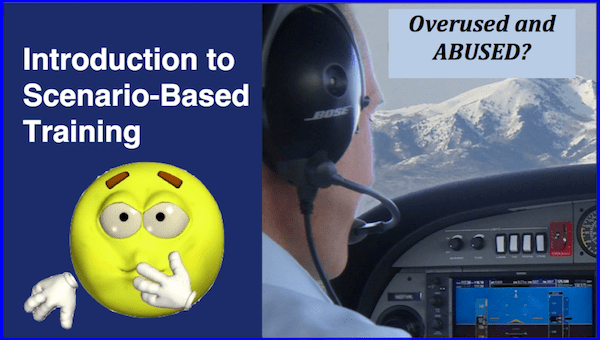 (like FITS before it) has acquired a stigma in the aviation training world though overuse, (and we have slammed the inappropriate application in this blog) – but please stay with me here ???? Because done properly, scenarios are the most important tool in an experienced educator’s arsenal. And they are now the required core focus of all modern FAA ACS evaluations. But unfortunately, scenarios have been overused (and abused) until many educators practically gag at the mention of the word. But please remember, the mind-numbing “practice area experience” is equally misused and probably responsible for more student drop-outs than scenarios. Applying all our aviation educator tools appropriately leads to the most effective educational experience. Properly constructed scenarios add a world of valuable challenges to training that more accurately resemble the real flight experience. They expand a small geographic area to the whole country (with no added cost!)
(like FITS before it) has acquired a stigma in the aviation training world though overuse, (and we have slammed the inappropriate application in this blog) – but please stay with me here ???? Because done properly, scenarios are the most important tool in an experienced educator’s arsenal. And they are now the required core focus of all modern FAA ACS evaluations. But unfortunately, scenarios have been overused (and abused) until many educators practically gag at the mention of the word. But please remember, the mind-numbing “practice area experience” is equally misused and probably responsible for more student drop-outs than scenarios. Applying all our aviation educator tools appropriately leads to the most effective educational experience. Properly constructed scenarios add a world of valuable challenges to training that more accurately resemble the real flight experience. They expand a small geographic area to the whole country (with no added cost!)
The Misuse…
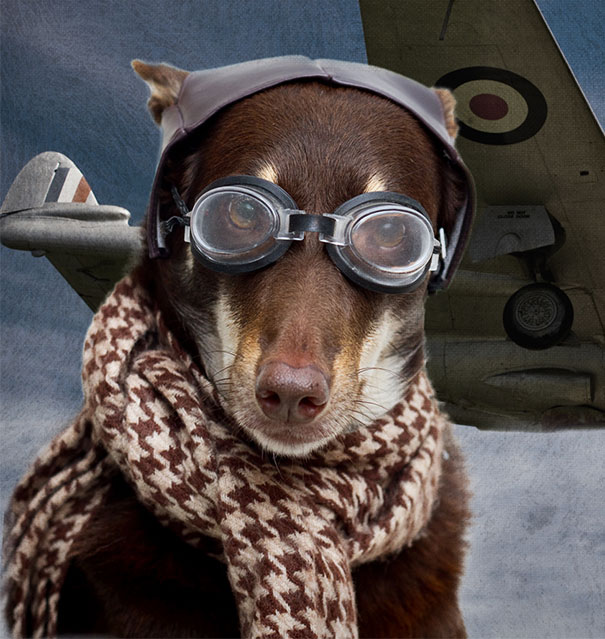 The misuse of scenarios comes from inappropriately imposing the same generic scenarios onto every student without customizing the challenges (think of those generic lesson plans every new CFI generates – and unfortunately deploys for the first year…). Given the unique needs of each student this process is doomed to failure by definition. Anticipated “learning opportunities” often instead become “play time” for instructors logging hours and an expensive burden for the pilot-in-training. Scenarios have the potential to turn flight training into “Disney” with no added educational value. The heart of a successful scenarios is a motivated and imaginative aviation educator customizing and curating the learning experience. Creative scenario generation and applicatiion creates motivating experiences proven to rapidly build skills, knowledge and judgement and result in a versatile, resilient pilots (and often at a lower cost through efficiency).
The misuse of scenarios comes from inappropriately imposing the same generic scenarios onto every student without customizing the challenges (think of those generic lesson plans every new CFI generates – and unfortunately deploys for the first year…). Given the unique needs of each student this process is doomed to failure by definition. Anticipated “learning opportunities” often instead become “play time” for instructors logging hours and an expensive burden for the pilot-in-training. Scenarios have the potential to turn flight training into “Disney” with no added educational value. The heart of a successful scenarios is a motivated and imaginative aviation educator customizing and curating the learning experience. Creative scenario generation and applicatiion creates motivating experiences proven to rapidly build skills, knowledge and judgement and result in a versatile, resilient pilots (and often at a lower cost through efficiency).
The Necessity…
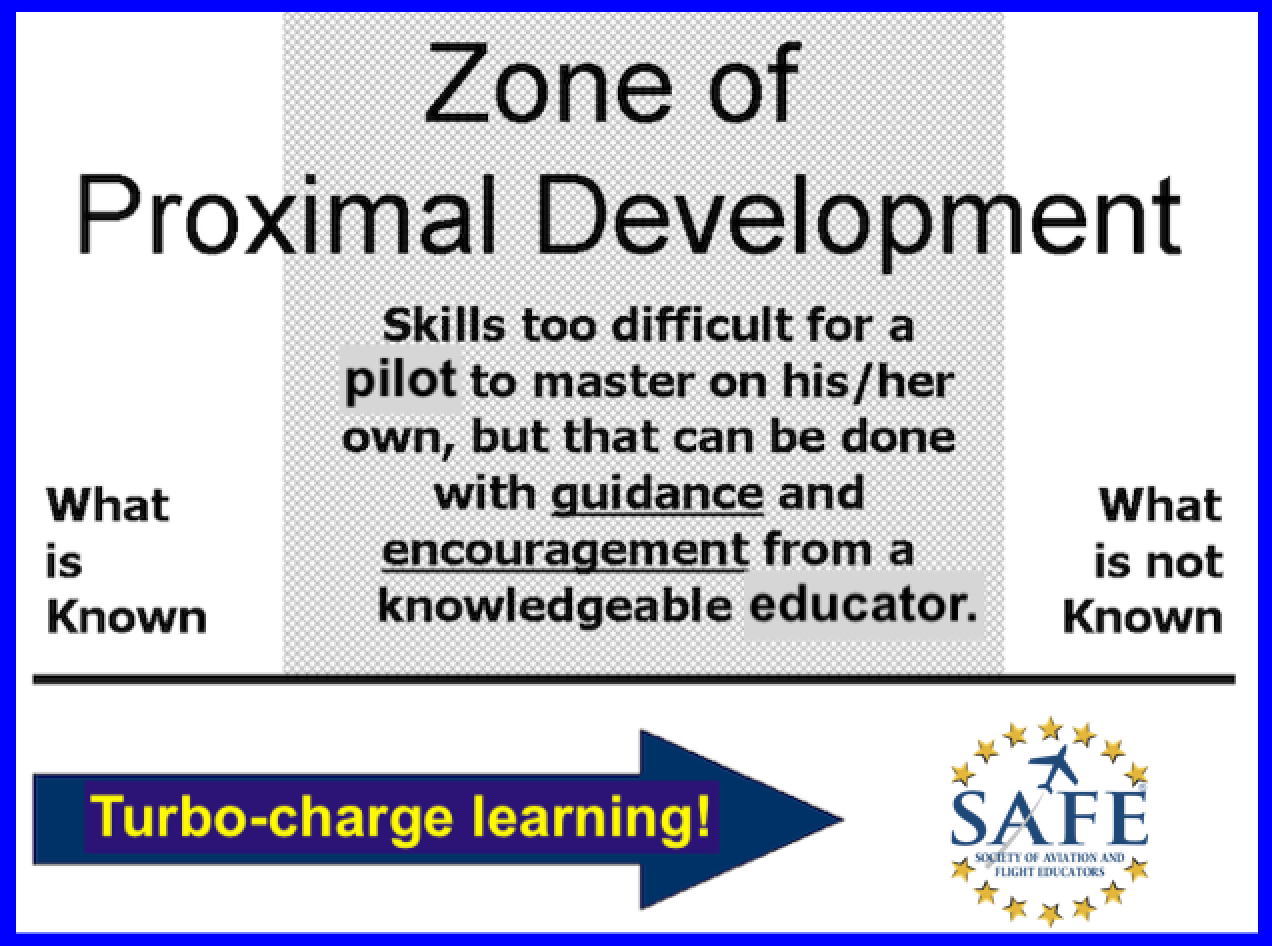 The proven necessity of scenarios is simple. Your new pilot, or “rusty recurrent pilot”, has the FAA privilege to fly day or night, anywhere in the country, for the rest of their life. And this is despite being only trained in a small geographic area on good weather days, in daylight. To safely meet the challenge of real life flying, a student and educator must engage together in some “active imagining.” If done correctly, scenarios transport your pilot to all the places and challenges they may encounter as a pilot. Working together, you must mentally extrapolate from the local area to the challenges of the whole country, in different terrain and weather, over the span of a lifetime.
The proven necessity of scenarios is simple. Your new pilot, or “rusty recurrent pilot”, has the FAA privilege to fly day or night, anywhere in the country, for the rest of their life. And this is despite being only trained in a small geographic area on good weather days, in daylight. To safely meet the challenge of real life flying, a student and educator must engage together in some “active imagining.” If done correctly, scenarios transport your pilot to all the places and challenges they may encounter as a pilot. Working together, you must mentally extrapolate from the local area to the challenges of the whole country, in different terrain and weather, over the span of a lifetime.
Scenarios Done Properly…
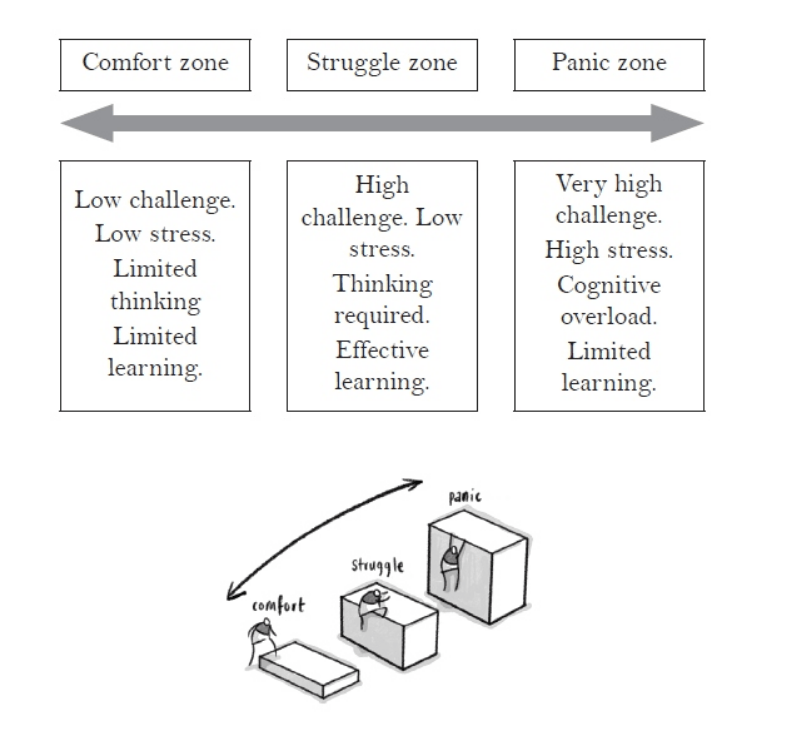 If properly constructed and executed, a scenario puts your student into the “struggle zone” or what educational psychologists call the “zone of proximal development”. An effective scenario presents the optimal level of personal challenge for an individual learner and enables an educator to both teach and evaluate at the highest correlation level of learning. Done poorly, scenarios merely run up the flight training bill and become an excuse for extraneous trips to exciting lunch destinations on the client’s dime. Buying specialized scenario books or apps to deploy cumbersome generic scenarios usually fail; to be successful, each scenario must be personal and challenge each unique leaner. To present an effective scenario, it is essential to your student well so you can craft realistic challenges appropriate to their level of skill and realm of experience. Remember, a solid relationship of trust is the #1 ingredient to success in any learning situation. Let’s unpack the “why” and “how to” of SBT and also provide a sales pitch for this creative way to turbo-charge your teaching.
If properly constructed and executed, a scenario puts your student into the “struggle zone” or what educational psychologists call the “zone of proximal development”. An effective scenario presents the optimal level of personal challenge for an individual learner and enables an educator to both teach and evaluate at the highest correlation level of learning. Done poorly, scenarios merely run up the flight training bill and become an excuse for extraneous trips to exciting lunch destinations on the client’s dime. Buying specialized scenario books or apps to deploy cumbersome generic scenarios usually fail; to be successful, each scenario must be personal and challenge each unique leaner. To present an effective scenario, it is essential to your student well so you can craft realistic challenges appropriate to their level of skill and realm of experience. Remember, a solid relationship of trust is the #1 ingredient to success in any learning situation. Let’s unpack the “why” and “how to” of SBT and also provide a sales pitch for this creative way to turbo-charge your teaching.
How to…Let’s get started!
S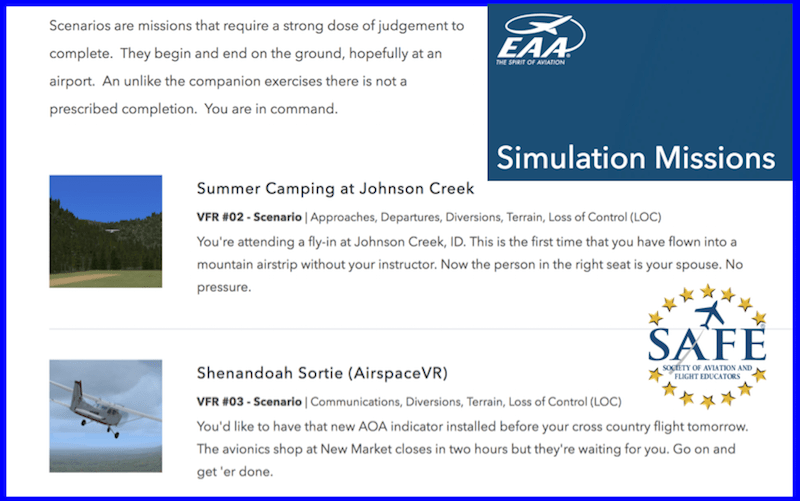 cenario training can be as simple as scrolling on Skyvector ( or ForeFlight) to a far off state and “mentally relocating” your student to a certain altitude with a mission and set of weather conditions. Active engagement and “buy in” is essential from the learner also so adding a personal mission or application is essential; make it personal! “You’re transporting your sick dog to the clinic and need to know what airspace we are in? And what viz and cloud clearance (radio/nav equipment) are required? Who do I talk to here and how will the plane perform at this altitude?” The more personally relevant and realistic each scenario is, the more actively your student will engage and the more effective their learning. (A previous blog revealed the learning benefits of practicing in the “struggle zone”) And all this can also happen effectively (and economically) on a bad weather day when flying might not be productive at your student’s level. If you have a simulator you obviously have an even better tool and the scenarios created for the EAA-PPC are available now on-line (more on this in a future article)
cenario training can be as simple as scrolling on Skyvector ( or ForeFlight) to a far off state and “mentally relocating” your student to a certain altitude with a mission and set of weather conditions. Active engagement and “buy in” is essential from the learner also so adding a personal mission or application is essential; make it personal! “You’re transporting your sick dog to the clinic and need to know what airspace we are in? And what viz and cloud clearance (radio/nav equipment) are required? Who do I talk to here and how will the plane perform at this altitude?” The more personally relevant and realistic each scenario is, the more actively your student will engage and the more effective their learning. (A previous blog revealed the learning benefits of practicing in the “struggle zone”) And all this can also happen effectively (and economically) on a bad weather day when flying might not be productive at your student’s level. If you have a simulator you obviously have an even better tool and the scenarios created for the EAA-PPC are available now on-line (more on this in a future article)
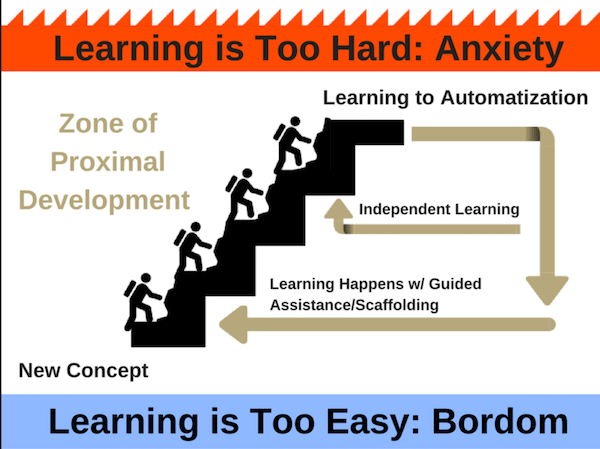 So if I am dealing with a Cornell aerospace student, a plausible scenario might start with “You are back at the Mohave Spaceport for Cornell and suddenly have an opportunity to do some personal flying in Mohave…how would you unpack the challenges of mountains and high density altitudes, unique “traffic”?” Or present the “Oshkosh Fly-In Challenge” with the Fisk arrival (this and others are in the EAA-PPC list) And remember these are also exactly the kind of challenges a good DPE is going to present during a practical test. Scenarios build a flexible, thoughful pilot that can unpack challenges and manage risks with skill, knowledge and imagination.
So if I am dealing with a Cornell aerospace student, a plausible scenario might start with “You are back at the Mohave Spaceport for Cornell and suddenly have an opportunity to do some personal flying in Mohave…how would you unpack the challenges of mountains and high density altitudes, unique “traffic”?” Or present the “Oshkosh Fly-In Challenge” with the Fisk arrival (this and others are in the EAA-PPC list) And remember these are also exactly the kind of challenges a good DPE is going to present during a practical test. Scenarios build a flexible, thoughful pilot that can unpack challenges and manage risks with skill, knowledge and imagination.
Creating mountains…
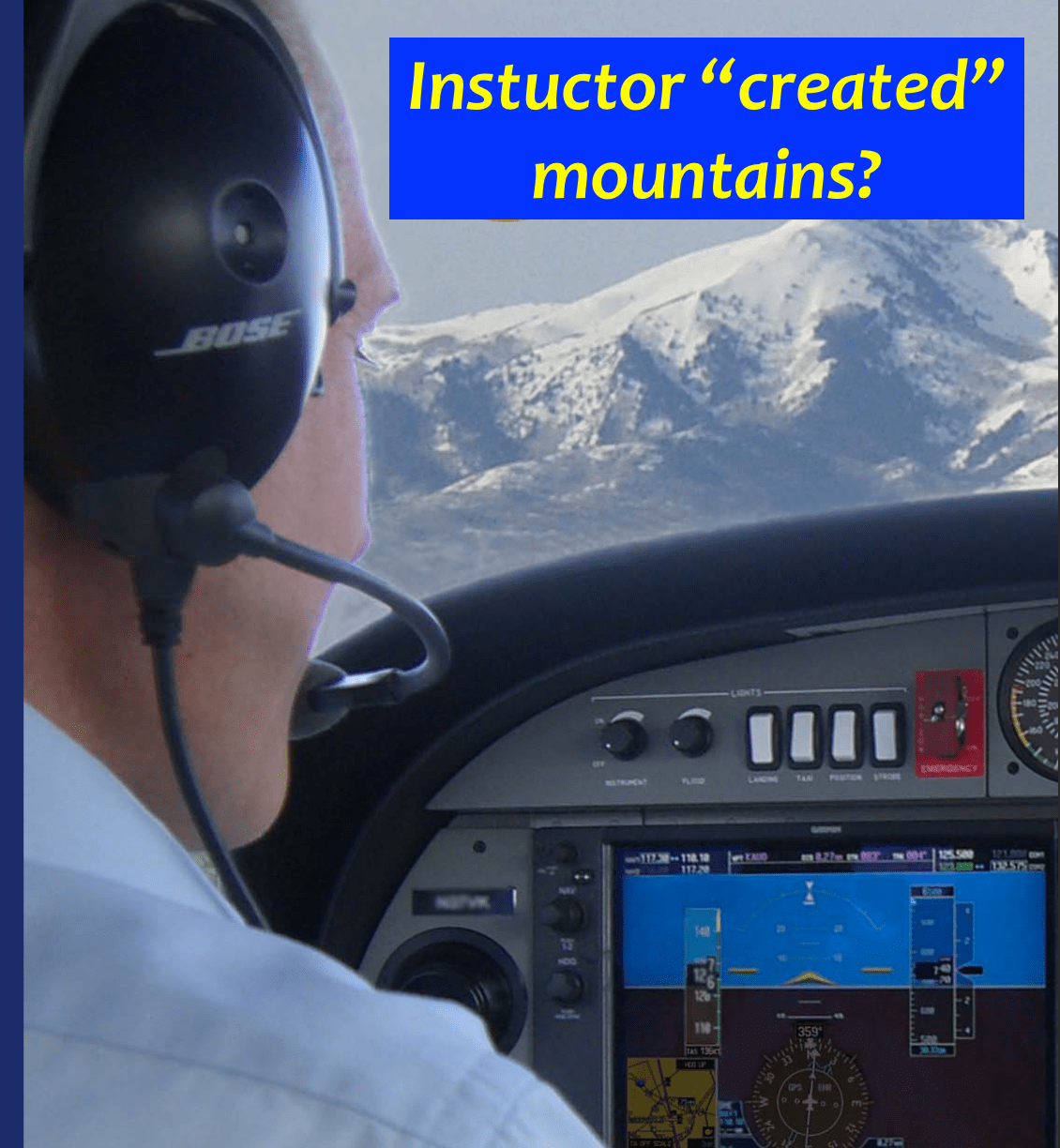 And how do you create those mountains? Perhaps after some low level ground reference maneuvering, impose a hypothetical “service ceiling” on your plane in MSL (2000 over the terrain but below the hilltops) Then limit the airplane power to 2100rpm (density altitude) and now transit the “mountains”. “Can we safely transition through the hills to our home airport? Should we divert instead>” Similarly you can impose a solid cloud ceiling and leave the weather decision to the student. Then accept the client’s decision -good or bad- if conditions are within your minimums and you can keep the flight safe and legal. Once you are flying with too much wind or too low clouds, the client experiences the consequences of their folly (and perhaps log some actual or get some good crosswinds) within a safe environment (watchful eye of the educator). Share your favorite scnarios in the comments below.
And how do you create those mountains? Perhaps after some low level ground reference maneuvering, impose a hypothetical “service ceiling” on your plane in MSL (2000 over the terrain but below the hilltops) Then limit the airplane power to 2100rpm (density altitude) and now transit the “mountains”. “Can we safely transition through the hills to our home airport? Should we divert instead>” Similarly you can impose a solid cloud ceiling and leave the weather decision to the student. Then accept the client’s decision -good or bad- if conditions are within your minimums and you can keep the flight safe and legal. Once you are flying with too much wind or too low clouds, the client experiences the consequences of their folly (and perhaps log some actual or get some good crosswinds) within a safe environment (watchful eye of the educator). Share your favorite scnarios in the comments below.
The essential element in all scenarios is allowing your client to make mistakes (while carefully maintaining a margin for safety) and supplying only minimal guidance. Allowing this famous “learning opportunity” to unfold is critical and easily ruined by too much “helping” from the CFI. As errors add up, their struggle will clearly demonstrate the consequences of bad decisions and the “accident chain” without the safety risk.
Motivating for students and educators!
Scenarios are exciting for both the pilot and the educator adding fun and variety to the training experience; this is how Master Instructors are built. Good scenarios beat “going to the practice area for some steep turns” hands down for learning efficiency and motivation. And there is a real difference between “one hour 2000 times” and “2000 unique hours of real teaching experience”. Attend our SAFE CFI-PRO™ workshop and acquire expert instructor skills more rapidly (are we still learning as educators?). Fly safely (and often!)
O ur SAFE CFI-PRO™ workshop covers the whole extended envelope catalog and application to both initial and recurrent training. We also cover “client-focused” flight training to combat the 80% drop out rate in initial flight training.
ur SAFE CFI-PRO™ workshop covers the whole extended envelope catalog and application to both initial and recurrent training. We also cover “client-focused” flight training to combat the 80% drop out rate in initial flight training.
Join SAFE to support our safety mission of generating aviation excellence in teaching and flying. Our amazing member benefits pay back your contribution (1/3 off your ForeFlight subscription)! Our FREE SAFE Toolkit App puts required pilot endorsements and experience requirements right on your smartphone and facilitate CFI+DPE teamwork. Our CFI insurance was developed by SAFE specifically for CFIs (and is the best value in the business).
